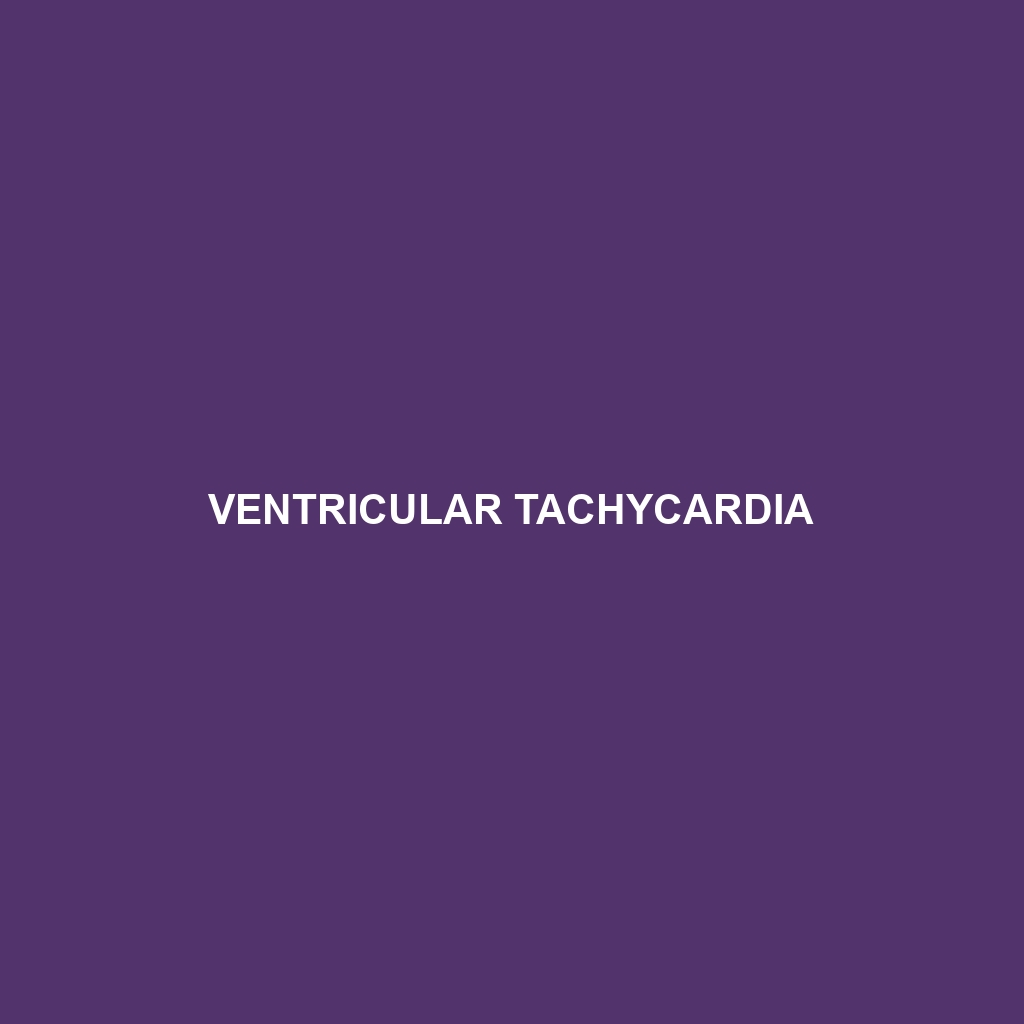Ventricular Tachycardia:
Definition and Description of Ventricular Tachycardia:
Ventricular Tachycardia (VT) is a potentially life-threatening condition characterized by an abnormally fast heartbeat originating from the ventricles of the heart. VT typically involves a heart rate exceeding 100 beats per minute for more than three consecutive heartbeats. This rapid heart rate can compromise the heart’s ability to pump blood effectively, leading to decreased cardiac output and potential loss of consciousness. VT can be categorized into monomorphic and polymorphic types, with each presenting unique clinical challenges.
Causes of Ventricular Tachycardia:
The causes of Ventricular Tachycardia are varied and can include underlying cardiovascular conditions such as coronary artery disease, heart failure, cardiomyopathy, and previous heart surgeries. External factors, including electrolyte imbalances, excessive consumption of stimulants (like caffeine and alcohol), and certain medications, may also precipitate VT. Additionally, genetic predispositions such as Long QT syndrome can contribute to its occurrence.
Associated Symptoms of Ventricular Tachycardia:
Common symptoms associated with Ventricular Tachycardia may include:
– Palpitations or an irregular heartbeat
– Dizziness or lightheadedness
– Shortness of breath
– Chest pain or discomfort
– Fatigue
In severe instances, patients may experience loss of consciousness or sudden cardiac arrest.
Diagnosis of Ventricular Tachycardia:
Healthcare professionals typically diagnose Ventricular Tachycardia through a combination of a detailed patient history and physical examination, followed by diagnostic tests such as an electrocardiogram (ECG or EKG), which tracks the electrical activity of the heart. Additional tests like echocardiograms, stress tests, or electrophysiological studies may be employed to evaluate the heart’s structure and function further.
Risk Factors for Ventricular Tachycardia:
Individuals at higher risk for Ventricular Tachycardia often include:
– Those with a history of heart disease or heart attack
– Older adults, particularly those over 65 years
– Individuals with structural heart abnormalities or significant heart valve disorders
– People with a family history of arrhythmias
Complications of Ventricular Tachycardia:
If left untreated, Ventricular Tachycardia can lead to severe complications, including heart failure, stroke, or sudden cardiac arrest. Persistent VT may also precipitate Ventricular Fibrillation—a more critical and life-threatening arrhythmia requiring immediate medical intervention.
Treatment Options for Ventricular Tachycardia:
Management of Ventricular Tachycardia may involve:
– **Medications**: Antiarrhythmic drugs to help regulate heart rhythm.
– **Cardioversion**: A procedure that uses electrical shocks to restore a normal heart rhythm.
– **Catheter Ablation**: A minimally invasive procedure to destroy the heart tissue causing the abnormal rhythm.
– **Lifestyle Changes**: Suggestions may include avoiding stimulants, implementing a heart-healthy diet, and managing stress levels.
When to See a Doctor for Ventricular Tachycardia:
It is crucial to seek medical attention if experiencing symptoms such as persistent chest pain, severe dizziness, fainting spells, or if palpitations become more frequent or severe. Timely diagnosis and treatment can be lifesaving.
Prevention of Ventricular Tachycardia:
Preventative measures for Ventricular Tachycardia include:
– Regular check-ups with a healthcare provider
– Maintaining a healthy lifestyle, including a balanced diet and regular exercise
– Avoiding tobacco, excessive alcohol, and recreational drugs
– Managing underlying health conditions such as hypertension and diabetes
Statistics and Prevalence of Ventricular Tachycardia:
Studies indicate that Ventricular Tachycardia affects approximately 1% of the general population, but the incidence is significantly higher among individuals with pre-existing heart diseases. It is prevalent among the elderly, with an estimated prevalence rate increasing with age.
Personal Stories or Case Studies about Ventricular Tachycardia:
Many individuals have experienced life-altering events due to Ventricular Tachycardia. Case studies often reveal how timely intervention and lifestyle modifications can dramatically change outcomes, emphasizing the importance of patient education and awareness in managing heart health.
Myths and Misconceptions about Ventricular Tachycardia:
Common misconceptions include the belief that Ventricular Tachycardia only affects older individuals or that it is always fatal. In reality, while it can be serious, many cases of VT are treatable and manageable with appropriate care and interventions.
Support and Resources for Ventricular Tachycardia:
For those dealing with Ventricular Tachycardia, various support groups and resources are available. For more information, visit this support page for additional resources and help.
Conclusion about Ventricular Tachycardia:
Ventricular Tachycardia is a serious condition that requires adequate understanding and prompt medical attention. By being aware of the symptoms, risk factors, and treatment options, individuals can take proactive steps to manage their heart health effectively. If you or someone you know experiences concerning heart symptoms, consult a healthcare professional without delay.
